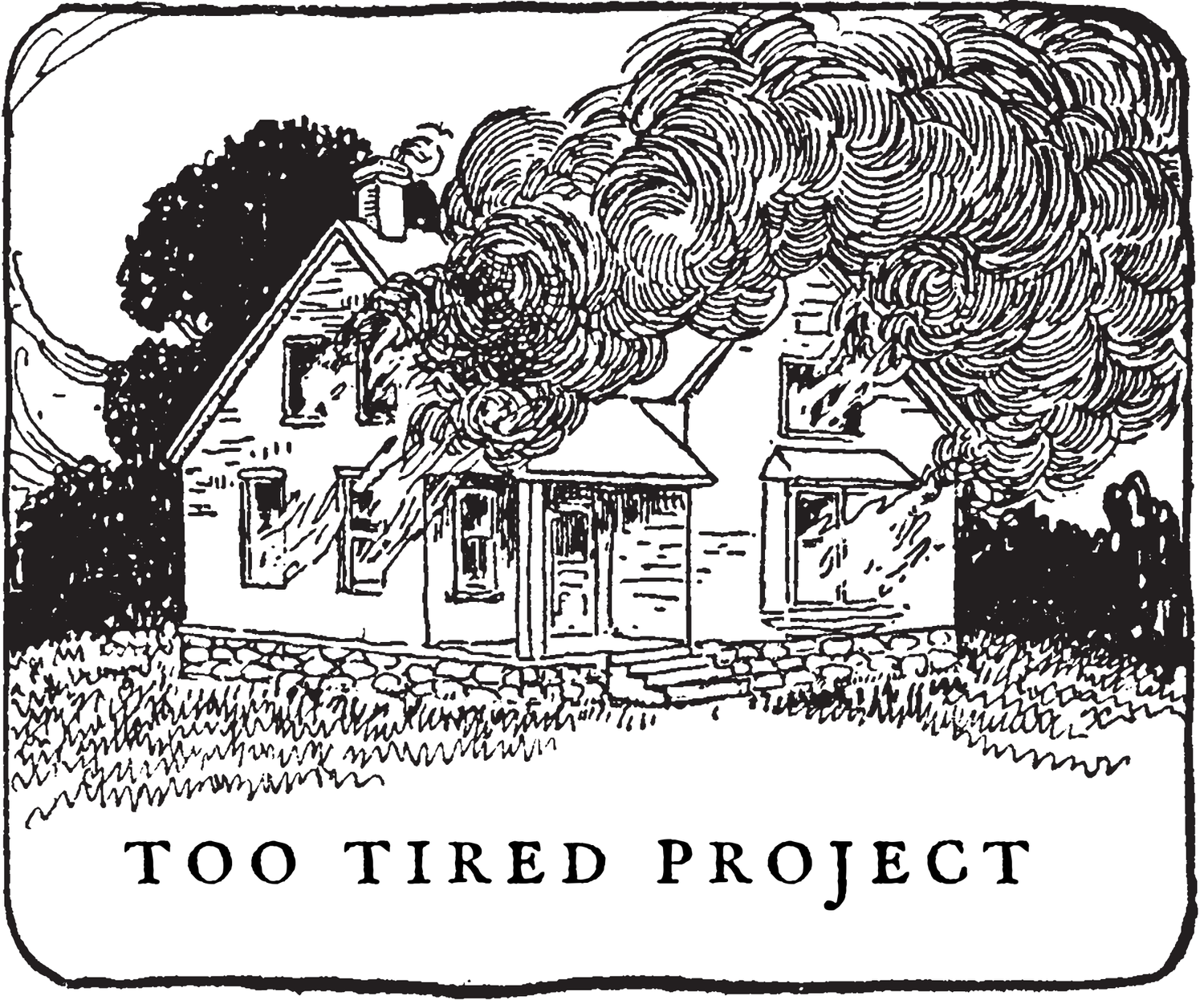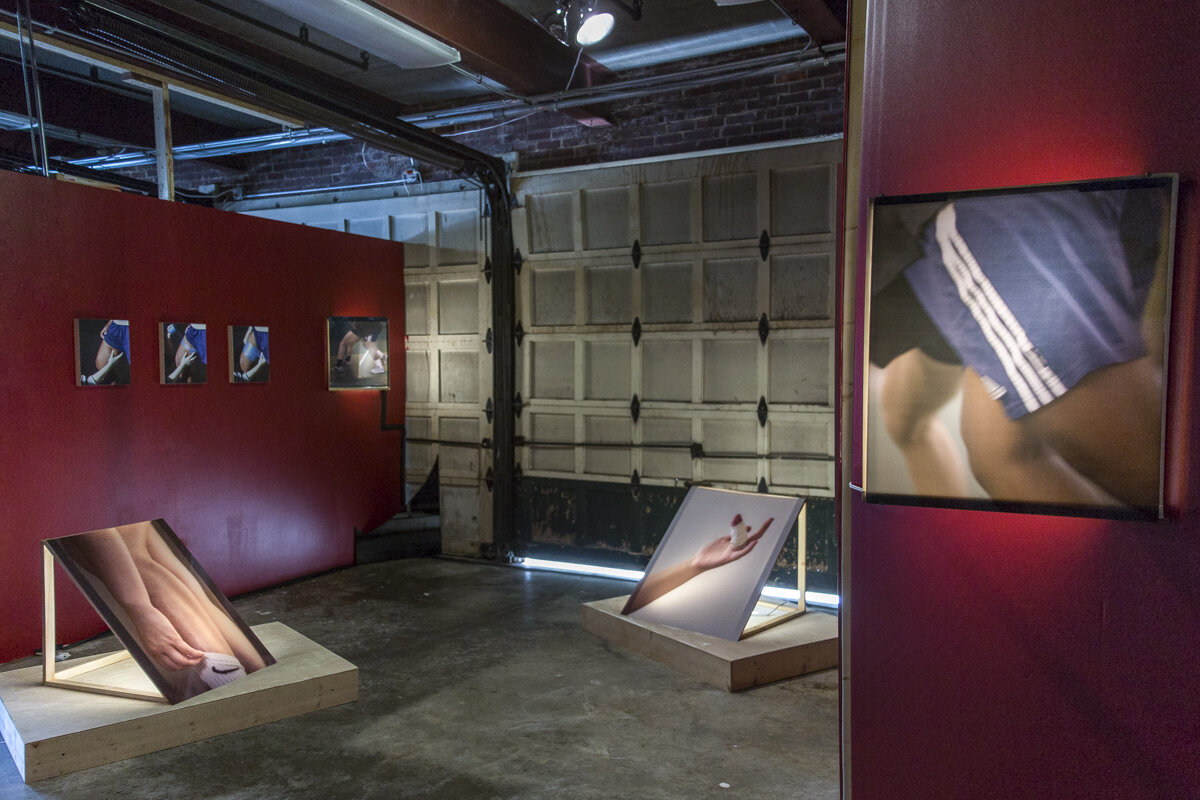Interview: Aurele Gould on their practice and project “Offense and Defense as Top and Bottom as Strength and Weakness”
Alex
Tell us about the project.
Offense and Defense as Top and Bottom as Strength and Weakness focuses on the celebration of non-male masculinity—strong, muscular bodies, skin that sweats, bends, gets dirty, and the tension in actions completed with another person. In my photographs, moments of transference between non-men are observed through objects like pre-wrap, medical tape, and sportswear. These objects center care, intimacy, and the complex appearance that ‘queer aesthetic’ unfolds itself to be. I’m drawn to creating non-defined spaces for photographing people and objects that raise questions such as ‘What does it mean to be a giver? A receiver?’ To visualize my queer loved ones in a natural, yet carefully considered composition reveals undertones of eroticism and something that can translate to the brink of pure joy. This series has morphed into my current fascination on ‘glare’ within my work, such as reflecting vs reflection, and glance vs glare. Along with glare, 'inversion' offers multiple definitions such as homosexuality or reversal. I somewhat obsess over these specific words to help create my images and sequencing. The multiple implications of certain words becomes the basis for how I continue to build a visual language on queerness.
The Intimacy of Pre-Wrap I
What is your process like?
My process is heavily on the mental side of things. Even though sometimes I start making images based on intuition and to create for arts sake, I find that I tend to sit with an idea in my head for quite a while before I take physical action in actually forming a photograph. Word association and quotes get me started in a sort of mind map to discern what I’m focused on at the moment. While playing with words and phrases that get stuck in my head, I begin to think about what would best visualize those thoughts/phrases/experiences. There’s a lot of back and forth between what I want to include in the frame and what to exclude-- I think it can be helpful sometimes to write a list of things that I don’t want to visually include in my images. This process takes a while, stretching from days to months depending on how complex I want the image or idea to be, and whether it can suffice as one image, or if it needs to be a sequence of images. All of this thought process is written about thoroughly, and I almost wait until it all makes sense in my head, because a composition will pop up in my head that finally achieves what I want it to, and that’s my cue to begin to photograph. I don’t know if it’s the most effective way of creating images, but it’s what I’m currently comfortable with and what has given me images I really feel a connection with.
Does mental health or wellness factor into the creation of your work?
Before this series, I don’t think my mental health intertwined with my artwork very much (except for anxiety about deadlines and the occasional missed assignment). But since then, I think that creating photographs is my own way of giving my brain something familiar and comfortable to work with when my mental health starts to overwhelm me. During the creation of this project, Offense and Defense as Top and Bottom as Strength and Weakness, I had a lot of outside events affecting my mental wellbeing. It’s strange to remember, because this series was encapsulated by so much grief in my personal life. Not even 6 months before beginning my thesis, I found out my stepdad had terminal cancer, and in January 2019, only 10 months later, I lost him. At the end of my last semester, two days before our thesis exhibition opened, I then learned that I also lost my grandfather as I was working on installation. Through both of those losses, I think the only thing that really grounded me was being able to turn to something familiar and mentally spend time away from all of that grief. That span of one year shifted how I interact with making art, because after that, I spend time on my art as a form of stress relief, introspection, and personal time with myself.
Untitled (Diptych I)
How did you begin this project?
This project started in the fall of 2018 as part of my senior thesis in undergrad; I had a vague conception of what I wanted to visually achieve within that year. The concept of masculinity represented through non-men came to me by reflection upon playing sports, specifically basketball, for most of my life before college. I began by trying to figure out what I wanted to say through this series, and I failed a lot at first. Since I was in undergrad, I had my work regularly looked at along with getting feedback from my peers. I had some of the worst critiques at the beginning of creating these images; I pulled from so many sources at once that the project was visually underwhelming and mentally overwhelming at the same time. Thankfully though, with constant reevaluation of my work along with having the time and space to just focus on these images helped me redirect myself into what this project became. The images became anecdotal using objects and physical motions such as pre-wrap and basketball exercises. I focused less on finding ‘answers’ within my work, and instead worked on raising questions instead.
Was the process of creating this project helpful for dealing with the emotion you’re describing in your images?
Working on this project let me learn so much about my own queerness and lesbianism. During that time, I read queer theory, stories, discussed with my queer friends about my images and their experiences, and overall helped me create photographs that were uplifting. Before this project, a lot of my photography focused on the intersection of queerness and isolation, which is interesting and deserves to be explored in its own right, but eventually I grew tired of cycling through those difficult emotions and wanted to explore how nuanced happiness can be. Emotions such as pleasure, bliss, euphoria, etc etc. just seemed more interesting to me as I started to close out my years as an undergrad.
Pull
Untitled (Diptych II)
What is your relationship to photography?
In some ways, inevitable. I had always been fixated on visual media, whether it was photographs, a music video, movies, video games… I guess I’ve always been intrigued how images were created and loved to carry around a point and shoot when I was young for obvious selfies, but also to take photos of anything and everything. I’ve always turned to photography for fun and have been drawn to how to make better and better images. In high school, I used to take photos almost every single day when I got home, mostly practicing portraiture (thank you, Sister), and then spending hours editing the photos I had taken instead of doing homework (sorry, Mom). Photography has just become something of a second-nature to me now, and I appreciate thinking about images critically and the theory behind taking photographs.
Sore
Has the pandemic shifted the way you approach your work and/or photography at all?
Yes, for sure. Since the pandemic, I’ve been going through my archive of photographs over the years. I’ve re-edited images and given second thoughts to some images, pulling them out to work with again in current projects. It’s been freeing not to produce images so frequently and instead spend that time thinking about how I can re-use my photographs in a new way.







